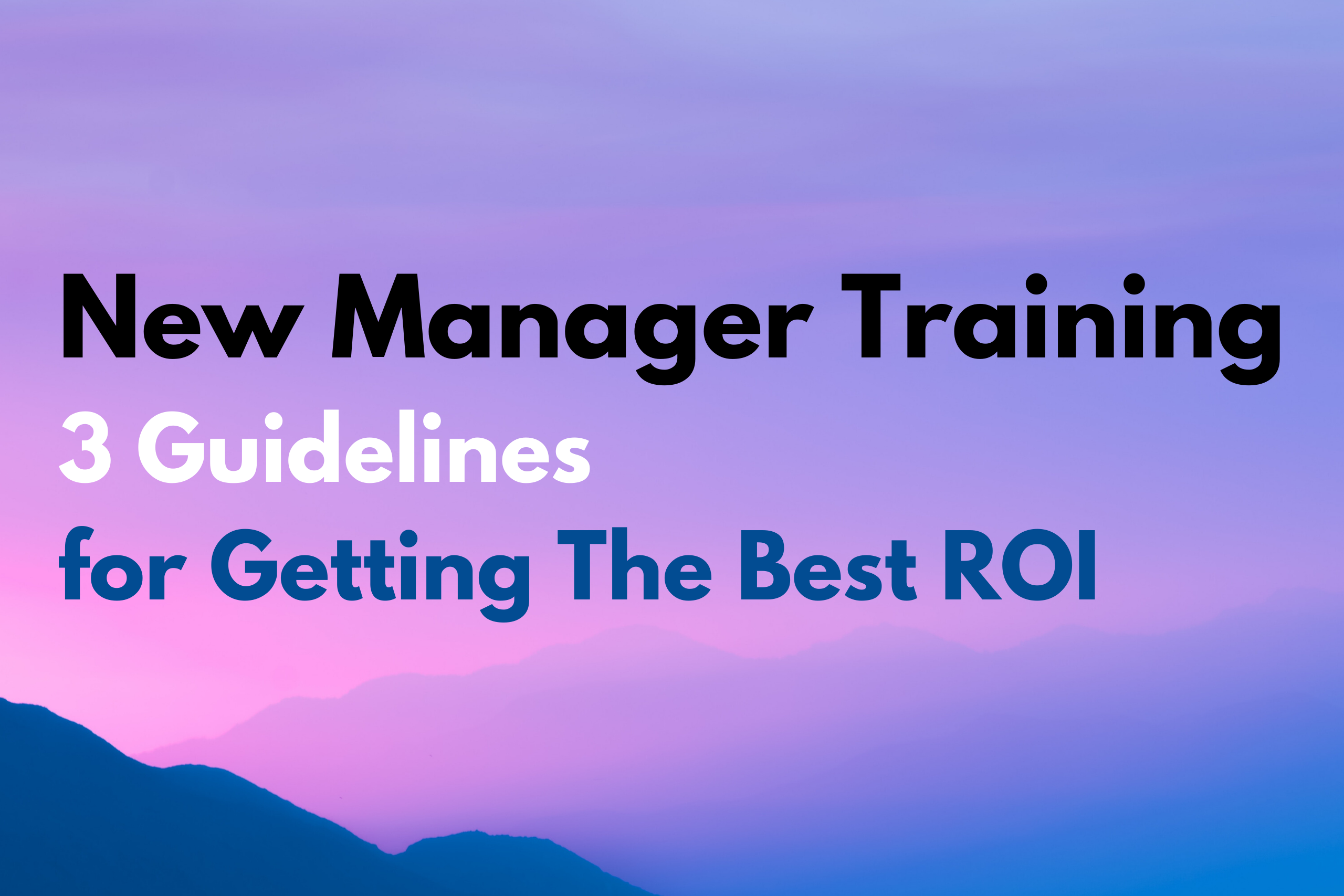We advocate for new manager training because we feel very strongly that the best time to develop someone into a high performance leader is right after they’ve been promoted into the ranks of management. At this stage, management and leadership is new to them, and they’re going to develop some kind of new habit with regard to their new professional role… so why not do your utmost to ensure that the skills they are developing are those most likely to lead to high performance leadership?
When conducting new manager training, here are three guidelines to follow for the best ROI on your training and development investment.
#1 – Make It Live, and Personalized
For all the commotion our society has made about young people preferring to do things digitally, it actually turns out that this is not necessarily the case. Young people just like everyone else have a genuine interest in being connected to each other.
While at the time of this writing, the workplace is undergoing a profound transformation as a result of the coronavirus pandemic, with a greater percentage of workers working remotely than ever before, consider (as circumstances allow) bringing people together in the same room for new manager training.
If this is not possible, then virtual training will do just as well. Especially if you make the training personalized. Have people meet each other and form bonds; undergo shared experiences and exercises together. Get them talking so that they can begin developing openness and trust with each other.
Emphasize Personal, Experiential Activities
Most of the people who form the ranks of your new managers will be even less interested in powerpoint presentations than earlier generations – so when bringing people together, be sure to include experiential activities. Do your best to include only as much lecturing and framing as is required to set up interpersonal and experiential activities.
Meet On A Weekly Basis
In order for your new managers to integrate what they are learning into their daily activities, it is critical to continue your training on a weekly basis. One session a week will suffice. No matter what phase of the training, the focus of the weekly meeting should be on frequent feedback and reinforcement. Feedback, both the offering and receiving of feedback, is particularly important to the development of a high performance leader.
#2 – Coach Them
After you have established live (in-person or virtual), personalized training on a weekly basis, the second key guideline is to set aside time for coaching each individual.
We can all point to a teacher or mentor who made a big difference in our lives – the same will go for your new managers who are developing into high performance leaders. Make time in your schedule to coach and mentor each individual – even if the time commitment is something as modest as 10-minutes per week.
Keep A Coaching File On Each Person
Keep a file for each person so that you can integrate feedback obtained through behavioral style and other assessments into your coaching. Each person will require different guidance and feedback based on their strengths and weaknesses, their personalities, and the situations they face in their respective departments.
Taking just a little bit of time to understand who you are dealing with will optimize the time spent on coaching, and also help better orient you to the talent you have in your ranks.
#3 – Invite New Managers’ Insights Forward
Every training cycle (we suggest 9 months) should end with an opportunity for your developing leaders to apply their new skills on real-world challenges and opportunities. Hallett Leadership has found the best way to do this is to spend the last third of leadership training on group projects, where participants can develop valuable final products – solutions, ideas, insights, projects – that drive the organization’s business or create solutions to industry problems.
This process of opening the floor to fresh insights and innovations from your newly-minted high performance leaders is an excellent way to transform leadership theory into action and measurable outputs. Also, as an aside, you will likely find that any challenges in group dynamics that were ignored earlier in the program will rise up during the project phase, and present an outstanding opportunity for the cohort to address in real time.
Not only do these new insights and innovations have great potential for the company’s bottom line – the opportunity to develop and present them may increase trainees’ loyalty toward the company, leading to improved retention over time.
Conclusion
In this era of rapid changes and industry disruptions, new manager training such as we’ve described here serves the double purpose of getting the most out of your people, as well as sourcing the best thinking that your workforce can produce. Finally, after your new managers have gone through this process together, they are incredibly likely to continue collaborating with each other across departmental lines.
We are available to discuss what new manager training at your organization could look like. Feel free to contact us here.





